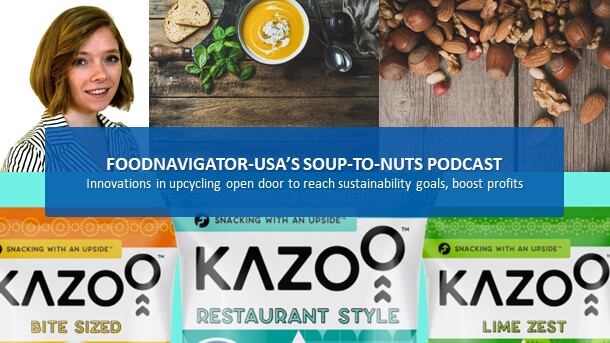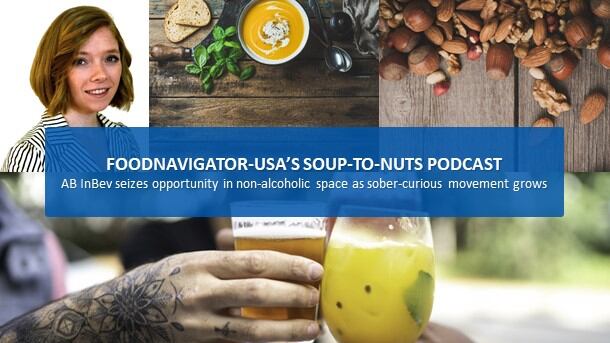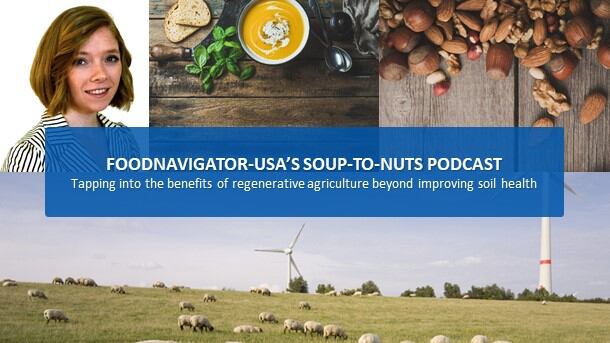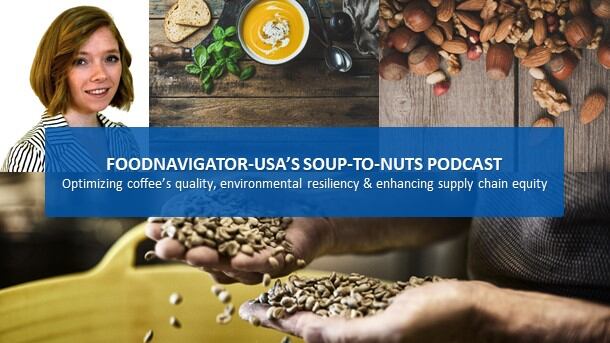According to the UN Food and Agriculture Organization, 1.3 billion tons of food is wasted annually globally, including 6 billion pounds of produce that is not harvested or sold for aesthetic reasons in the US alone. In the US, the Environmental Protection Agency estimates we waste more food than any other country, at nearly 40 million tons, or as research from the commercial waste and recycling collection agency RTS notes in a report about 219 pounds per person. As RTS notes, wasting food has “irreversible environmental consequences,” including generating about 11% of the world’s greenhouse gas emissions.
From this grim landscape, though, is a significant business opportunity that research firm PreScouter estimates could have more than a five-fold return on investment. In a recent report citing data from the nonprofit ReFED, Prescouter notes that annual investment of $14 billion into food and waste upcycling could reduce food waste by 45 million tons annually over the next 10 years and lead to $73 billion in annual profits as well as greenhouse gas emission reductions of 75 million metric tons. Eager to seize this opportunity, PreScouter adds more companies are innovating ways to upcycle waste streams, leading to a significant uptick in patent filings.
In this episode of FoodNavigator-USA’s Soup-To-Nuts podcast, Prescouter technical director Gareth Armanious and founder of upcycled food startup Kazoo Snacks Josh Death break down the business opportunity in upcycling, including consumer interest and the breadth of applications from foods and beverages to packaging. They also share what companies should consider before jumping in to guarantee the return on investment is worth it, and outline common challenges and strategies for overcoming them.
[Editor’s note: Never miss another episode of FoodNavigator-USA’s Soup-To-Nuts podcast – subscribe today.]
An ‘explosion of innovation’
While still an unfamiliar or new concept to many industry players and consumers, upcycling is gaining traction quickly, thanks in parts to efforts by the Upcycled Food Association, including officially defining the term in mid-2020, creating a seal and launching a consumer education campaign.
Through these efforts, UFA hopes to double the 5% compound annual growth rate that Future Market Insights predicted in 2019 when it pegged the industry at $46 billion.
While it is still early days, these efforts appear to be paying off, based on a dramatic increase in industry interest, including the recent entrance of large players, such as Dole, Mondelez Foods, Del Monte and Barry Callebaut, and investor interest, as seen in deals like the Rind Foods’ $6.1 million fundraise last June and Kaffe Bueno’s $1.2 million seed fundraise in late 2020.
And as Armanious notes, innovation and partnerships in the space is also on the rise – potentially paving the path for exponential growth in the future.
“In the last year or so, we’re seeing a 50% or greater increase in file patents,” from 13 in 2018 to 24 in 2019 and 40 in 2020, Armanious said. “I think that is a good indicator of renewed or enhanced interest in the area, as well as an increase in innovation as well.”
The patent count also likely is only the tip of the iceberg given how resource intensive filing a patent can be, noted Armanious. “I think where a lot of players land right now in terms of what an investment looks like to them in this space is” not necessarily a patent but rather “understanding their own waste streams and looking to co-develop or partner with a company that maybe has a technology that’s at least tangentially applicable, and then building that out to better suit their waste stream.”
Sourcing supplies and finding partners
Finding those partnerships or sourcing upcyclable ingredients isn’t as easy and navigating established supply chains for new crops, in part because Armanious says there isn’t an established repository of information.
“It’s a lot more of a disjoint,” but a lot of what PreScouter does is connect groups with potential solutions for their waste streams and helping them source more sustainable materials, Armanious explained.
Armanious notes that sourcing potential waste or byproducts for upcycling is only one of the components that potential players should consider when evaluating an opportunity. And it is far from the first.
Acknowledging that everyone’s situation is different, he explained that the first step is to identify a pain point or understand a major waste stream that is produced and then identify how to tackle it. This includes understanding the material, its composition of carbon and fat and protein, and then exploring the technical aspects. From there, he says, companies can identify opportunities and begin looking for partners.
When evaluating partners and supply streams, Armanious recommends companies consider look for something local because shipping large volumes or weight in a facility in another region is expensive and undoes some of the intended good.
Finally, he notes, while collaborations are helpful, if a company can repurpose its own waste stream it will have a more powerful story to tell consumers.
A broad range of applications
Despite these challenges, Armanious says upcycling offers a broad breadth of applications from whole foods and beverages to ingredients to packaging and beyond.
For example, he points to innovations by the Netherlands-based startup Fooditive, which is using apple and pear side streams to create sweeteners, preservatives, thickening agents and emulsifiers for nutrition and health products, personal care and the beauty and spa markets.
US-based Renmatix is another company that Armanious said is using nonfood, unused and under-used plant materials to create supercritical crystalline cellulose, cellulosic sugars and omno polymers for nutrition, personal care and the biofuel market.
While upcycling potential waste for human consumption is considered the highest standard, Armanious notes there is significant potential for creating unique packaging and other food production materials, such as those created by the Israeli firm ubq and Malta-based BioPowder.
Case study: Kazoo Snacks
Just as diverse as the opportunities for upcycling are, so too are the challenges, which the founder of the upcycled corn food brand Kazoo Snacks Josh Death learned the hard way when he set out to make a better-for-you, low-carb tortilla chip out of upcycled corn germ that actually tasted good.
The genesis of Kazoo’s corn chips was Death wanted a lower carb snack that tasted good, and for him that meant using a corn base. By using corn germ, he could lower the carb and increase the healthy fat content, and also help redirect waste from the corn starch industry.
But as Death hinted at, producing a great quality tortilla chip at scale with 40% corn germ wasn’t easy, and in fact took working with three labs over four years and ultimately teaming with the leading food corn scientists in the world – and even they initially thought what he wanted to do couldn’t be done.
“Even though we’ve only made one ingredient change, so to speak, because [corn germ] cooks differently than regular corn and has different properties,” including being wetter and fattier, “it changed the production process,” he said.
Creating a viable and tasty formula was only the first challenge – the second was finding someone to manufacture it, which is a common challenge that has forced more than one startup using upcycled ingredients to invest heavily and early in their own facility. But for Kazoo, Death was able to find a partner willing to work as hard as he was.
“We spent a lot of time working with a few co-packers to see if we could even integrate into their process. And there was one that we found who is the current co-packer we're working with in Florida. And, they were able to deliver an excellent product. We did it through a mini scale up. So we went from bench to doing 500 pounds and … we felt that we had the product,” he said.
But, he added, “when we flicked the switch and said, okay, let's do our big order. Let's do 15,000 pounds. And then tire 15,000 pounds was wasted. Um, because it didn't scale up the way they thought it would scale up.”
After working out the kinks to create a corn snack platform technology that can go far beyond tortilla chips, Death said he is eager to both create additional products but also team with large CPG companies and other entrepreneurs to incorporate corn germ in their products so that the environmental benefits are even greater.
As illustrated by Death’s experience and PreScouter’s research, playing in the emerging upcycled food and beverage space is not for the faint of heart – but it does hold significant potential, making it a category to watch closely in the coming years.




